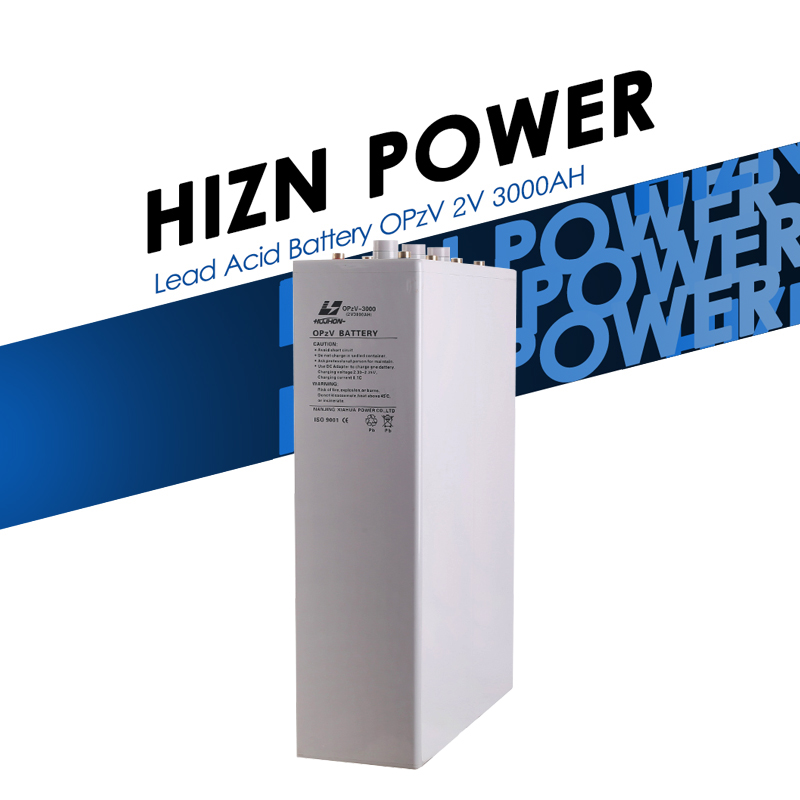OPzV batteries and GEL batteries are both types of Valve Regulated Lead-Acid (VRLA) batteries, but they have some differences in their design and applications.
1. Electrode Design
- OPzV Batteries:
- Use tubular plates for the positive electrodes. The tubular design involves a grid structure filled with lead oxide paste, encased in a series of tubes (gauntlets) that hold the active material in place.
- The negative plates are usually flat pasted plates.
- GEL Batteries:
- Typically use flat plate design for both positive and negative electrodes.
- Both the positive and negative grids are flat and pasted with lead oxide paste.
2. Separator Type
- OPzV Batteries:
- Use microporous separators designed to fit the tubular structure of the positive plates. These separators prevent short circuits while allowing efficient ionic flow.
- GEL Batteries:
- Use AGM (Absorbent Glass Mat) separators or other types of separators suitable for flat plate designs. The separators are designed to hold the gel electrolyte in place and maintain separation between the plates.
3. Active Material Application
- OPzV Batteries:
- The positive active material is inserted into the tubes of the tubular plates. This process is more complex and involves ensuring the active material is evenly distributed within the tubes.
- The negative active material is pasted onto flat grids.
- GEL Batteries:
- The active material (lead oxide paste) is applied to the flat grids of both positive and negative plates. This is a more straightforward pasting process compared to the tubular design of OPzV batteries.
4. Electrolyte
- OPzV Batteries:
- Use a gelled electrolyte that is immobilized within the battery. The gel electrolyte is introduced after the plates are assembled in the cells.
- GEL Batteries:
- Also use a gelled electrolyte, but it is designed for flat plate configurations. The introduction of the gel electrolyte and its distribution may be simpler due to the flat plate design.
5. Formation Process
- OPzV Batteries:
- Formation involves the initial charging process where the tubular plates and gel electrolyte interact to form the active materials. The tubular plates require careful control to ensure proper formation.
- GEL Batteries:
- Formation also involves an initial charging process, but the focus is on ensuring the flat plates are fully charged and the gel electrolyte is properly integrated into the structure.
6. Structural Integrity and Assembly
- OPzV Batteries:
- The tubular plate design offers higher structural integrity and better retention of active material, which is important for long cycle life and deep discharge applications.
- Assembly involves careful placement of tubular plates and microporous separators to ensure the tubular structure is maintained.
- GEL Batteries:
- The flat plate design is simpler to assemble and generally requires less precision in aligning plates and separators compared to tubular designs.
- The assembly focuses on ensuring even distribution of the gel electrolyte across the flat plates.
7. Application and Performance Testing
- OPzV Batteries:
- Often undergo more rigorous testing for deep discharge and cycling performance, given their typical use in applications requiring long service life and high reliability.
- GEL Batteries:
- Tested for performance in a variety of applications, including those that may not require as deep cycling as OPzV batteries, such as standby power.
Summary
In summary, the main differences in the manufacturing processes between OPzV and GEL batteries arise from the different electrode designs (tubular vs. flat plates) and the type of separators used. OPzV batteries involve more complex assembly and material application processes due to the tubular plate design, which provides enhanced performance for deep cycle applications. GEL batteries, while also using gelled electrolyte, generally have a simpler manufacturing process due to their flat plate design and are suitable for a wider range of applications.


